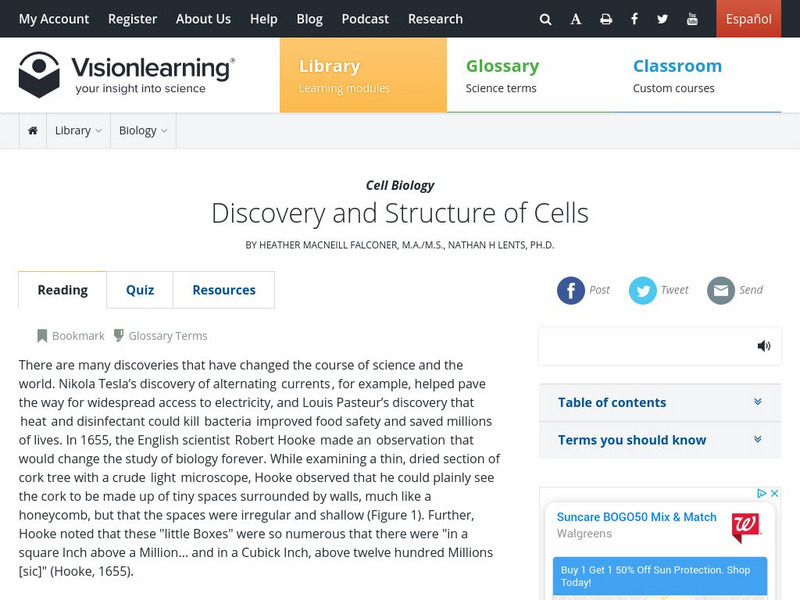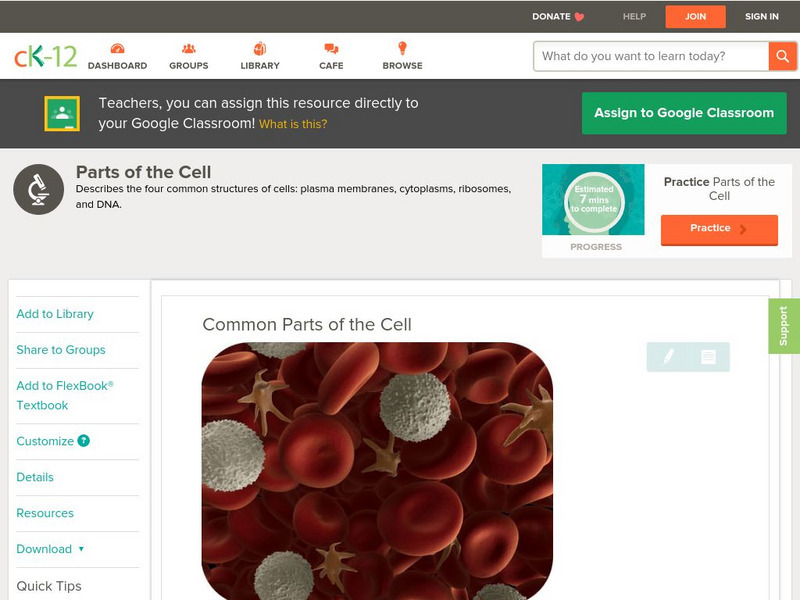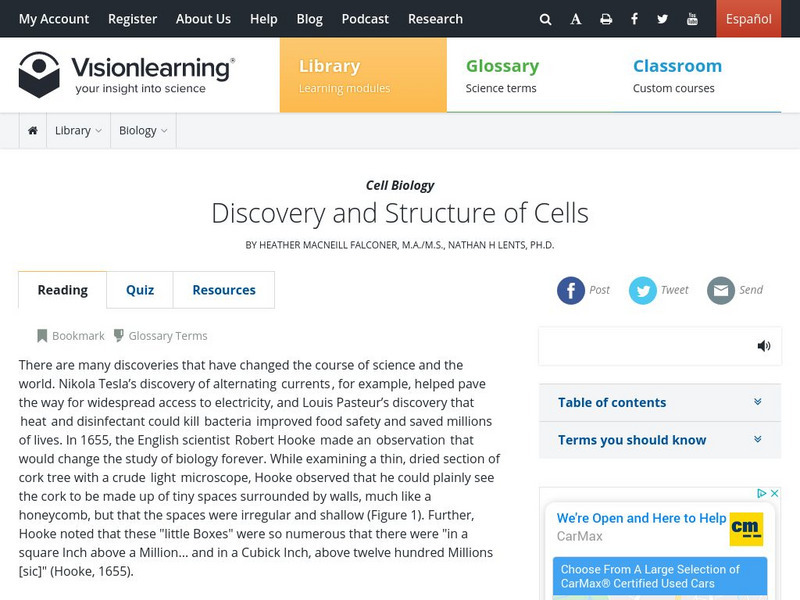Curated OER
Studying Living Organisms
Students discover and discuss the differences between prokaryotes and eukaryotes. Using a microscope, they examine various prepared slides of prokaryotic and eukaryotic organisms.
Curated OER
Cloning
Students view the history to cloning cats. Students show examples of what they know about cloning. Students surf the net on all theories on cloning. Students view the critics views on cloning.
Curated OER
Feedback and Flowcharts
Sixth graders explain what a negative feedback system is and they distinguish it from a positive feedback system. They describe examples of how negative feedback is used in both nature and technology. , Students define homeostasis, and...
Curated OER
Is There Really Life on Mars?
Young scholars examine the work of scientists and determine how they test their theories.
Curated OER
Hazard Mitigation: Bioterrorism
High schoolers discuss different ways to spread infectious diseases. In this bioterrorism lesson, students model the rate of smoke emission using CalRoad software. They analyze the effects of airborne release of...
Curated OER
Transformation With A Firefly Gene
Students understand the process of bacterial transformation through experimentation. They describe the function of two important genes of the pBestLuc plasmid. They explain how to induce competence in E. coli cells.
Curated OER
Creative Ways To Teach Evolutionary Concepts
High schoolers explore evolutionary concepts in cartoons and lab activities. They describe and explain evolutionary concepts featured in a cartoon and participate in laboratory activities.
Curated OER
Charge-Coupled Devices (CCDs)
Students explore CCDs or Charge-Coupled Devices. In this digital devices lesson, students examine how CCDs are constructed, collect light, and create a digital signal.
Curated OER
How We Perceive Movement, Depth and Illusions
Students examine how depth perception works through a class experiment. They design and perform their own experiment that investigates visual illusions.
Curated OER
Things Living in a Pond
Ninth graders observe, compare, and classify various microorganisms using a microscope. They answer discussion questions, and record their observations on a chart.
Curated OER
Origins Video Questions
In this biology activity, students complete 19 short answer questions about biodiversity and information obtained during a class video.
Curated OER
Chem Word Search Puzzle
In this chemistry terminology worksheet, students review and discuss nineteen terms associated with chemistry and then locate and circle each term in a word search puzzle.
CK-12 Foundation
Ck 12: Common Parts of the Cell 1
[Free Registration/Login may be required to access all resource tools.] Online activity summarizes the cell theory, describes four parts all cells have in common, and the importance of the work of Robert Hooke and Anton van Leeuwenhoek.
TED Talks
Ted: Ted Ed: The Wacky History of Cell Theory
Video describes the development of the cell theory and some of the scientists and disagreements involved. [6:12] Includes a short quiz and a list of additional resources to explore.
Texas Education Agency
Texas Gateway: It's All About Cell Theory
The following tutorial is an explanation of cell theory.
CPALMS
Florida State University Cpalms: Florida Students: The Cell Theory
Learn how the Cell Theory defines living organisms.
Khan Academy
Khan Academy: Cell Theory Questions
This study resource from Khan Academy provides practice questions for the MCAT. "Cell theory" questions are provided on this resource.
Vision Learning
Vision Learning: Cells: Discovery and Basic Structure
This module focuses on cell structure and how the organelles function together to form the smallest unit of life. The cell theory is also discussed along with the basics features of the cell. Site also includes an interactive practice...
CK-12 Foundation
Ck 12: Life Science: 2.3 Cell Theory
Learn about the cell theory and levels of organization in a multicellular organism.
CK-12 Foundation
Ck 12: Biology: Common Parts of the Cell
[Free Registration/Login may be required to access all resource tools.] Describes four parts all cells have in common.
City University of New York
Exploring Life@bi Odot Edu: Cell Theory
Essay on the history of our knowledge of cells and the development of the cell theory.
The Wonder of Science
The Wonder of Science: Ms Ls1 1: Cell Theory
Work samples, phenomena, assessment templates, and videos that directly address standard MS-LS1-1: cell theory.
Vision Learning
Visionlearning: Cell Biology: Discovery and Structure of Cells
Explanation of when the cell was discovered and how ideas have evolved into modern cell theory. Discover the cell structures and their functions.























